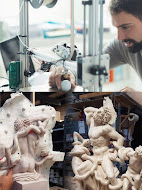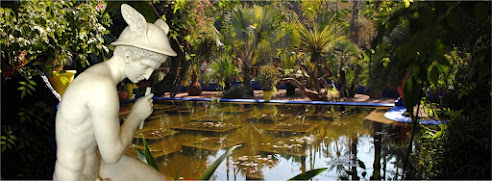Differences between 3d printing and molded marble
Many customers wonder about the differences between a sculpture made with 3D printing and those made with molded marble.
The manufacturing processes of 3D printing and casting with molds using marble powder bonded with resin are two very different processes that result in pieces with distinct characteristics in terms of texture, material, and weight.
The key differences are described below:
3D Printing:
In 3D printing, pieces are built layer by layer from a thermoplastic material or other materials, melted or deposited by a print head. No physical mold is needed, as the pieces are created directly from a digital model.
The materials used in 3D printing cover a wide range, although thermoplastic is common in digital sculpture printing.
The texture of 3D printed pieces depends on the material used and is usually rough, depending on the print resolution and quality. In some cases, they are sanded to achieve smoothness.
Finally, the weight of a 3D printed piece depends on the material and specific design. They can be light or heavy, depending on material density and the amount of material used in printing. Sculptures and pieces are mostly hollow in many cases, creating the surface with a thin layer.
Mold Casting with Marble Powder Bonded with Resin:
Manufacturing Process: In this process, the first step is modeling the original sculpture in clay or another material. A silicone mold is created from the model. This mold is filled with a mixture of marble powder bonded with a specific casting resin, ideally 70% to 80% marble. The mixture hardens in the mold before removing the final piece, which is then sanded and polished.
Due to the composition of marble powder, pieces made this way tend to be heavier compared to 3D printed pieces, especially when replicating the look and density of natural marble.
These sculptures are solid, giving them a weight similar to carved marble. Only medium or large-sized sculptures are hollowed using the "turning" process to reduce some weight. They remain sturdy and reasonably heavy (for example, a 180cm sculpture weighs about 80 to 100 kilograms).
They are durable sculptures, weather-resistant, making them suitable for gardens and outdoor settings.
At decorarconarte.com, we have chosen molded marble because we believe it better recreates the original antique pieces.






Comments
Post a Comment